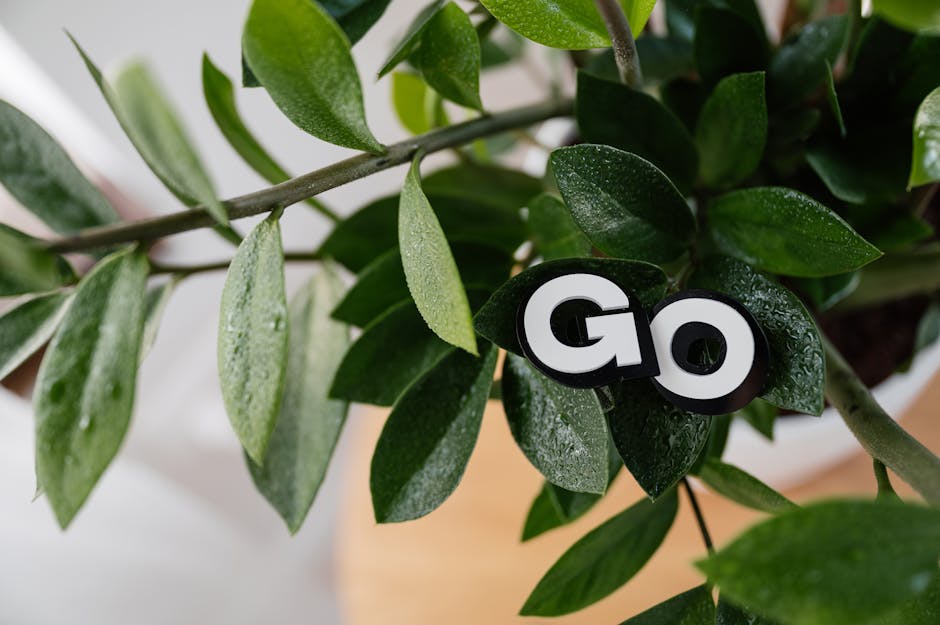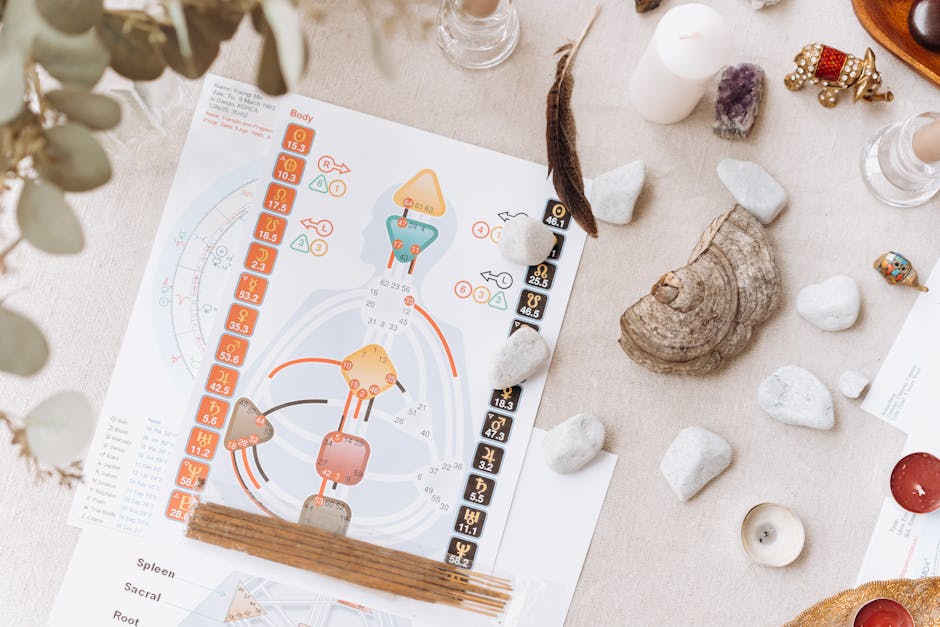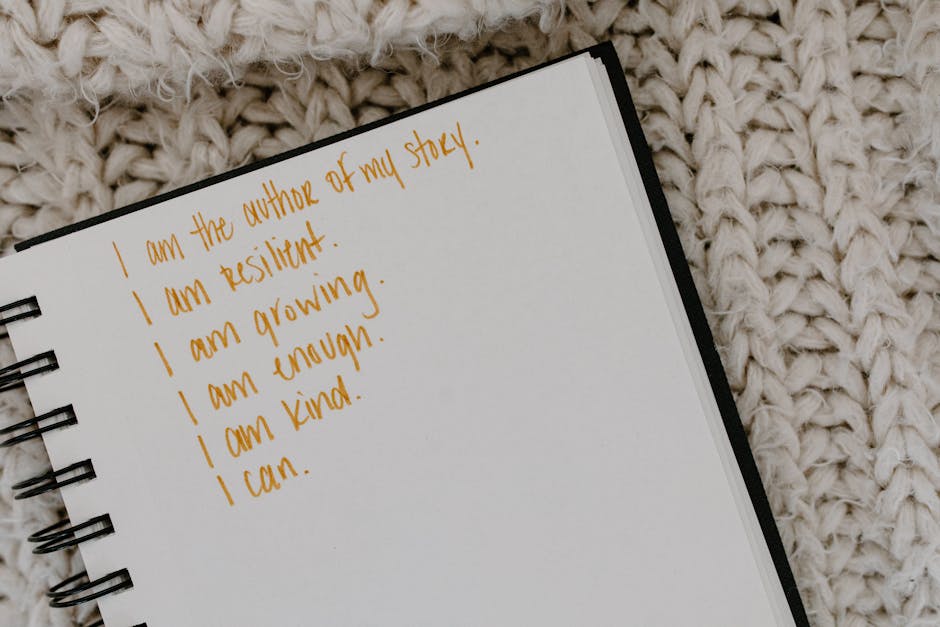Are you looking for meditation tips and techniques that are easy to follow and actually work in daily life?
In this blog post, you’ll discover simple meditation tips, beginner-friendly techniques, and unique hacks that make the practice easy to fit into any lifestyle.
Whether you’re seeking spiritual connection, stress relief, or a way to boost your manifestation journey, this guide will show you practical ways to make meditation a natural part of your life.
Table of Contents
Understanding Meditation on a Deeper Level
What is Meditation Really About?
Meditation is about cultivating a deeper awareness and presence within yourself, no matter the technique.
It’s based on the idea that you can guide your thoughts and attention on purpose to find inner peace and live in better alignment.
More than just relaxation, meditation is a tool for self-discovery and personal growth.
Unlike resting or sleeping, meditation keeps you awake and aware while training your mind to become stronger over time.
Here’s what meditation provides beyond basic stress relief:
- Enhanced self-awareness and emotional intelligence
- Mental clarity for better decision-making
- Spiritual connection to something greater than yourself
- Creative breakthroughs and innovative thinking
- Manifestation alignment between inner state and outer reality
The biggest myth?
That you need to empty your mind completely.
That’s actually impossible!
Your brain generates thousands of thoughts daily.
Instead, this practice teaches you to observe thoughts without getting tangled in them.
The Connection Between Meditation and Manifestation
Certain types of meditation can help in programming your subconscious mind.
Your subconscious controls the majority of your daily behaviors and beliefs.
By entering a meditative state, you bypass the critical conscious mind and speak directly to this powerful inner programming.
Meditation creates alignment between what you think, what you feel, and what you attract.
When your inner world matches your desires, manifestation becomes natural rather than forced.
How meditation supports manifestation:
- Cultivates inner stillness necessary for clear visualization
- Reduces mental noise that blocks intuitive guidance
- Aligns emotional frequency with desired outcomes
- Activates the bridge between conscious intention and subconscious acceptance
According to the National Center for Complementary and Integrative Health, meditation significantly impacts brain activity, emotional regulation, and stress response—all crucial factors in successful manifestation.
Meditation Tips for Beginners (Made Simple)
How to Start Your Meditation Journey
Getting started is much simpler than it looks.
You don’t need special equipment, deep spiritual knowledge, or hours of free time.
Focus on the essentials:
1. Pick a Quiet Spot
Choose a space where you won’t be interrupted.
If you do not have a dedicated room for your practice, you can pick:
- A quiet corner of your bedroom is perfect.
- Choose a place that’s free from distractions.
2. Get Comfortable
There’s no need to twist into a pretzel.
Comfort is key.
Sit, lie down, or stand—whatever feels natural.
Your body should feel relaxed, not strained or stiff.
Prioritize relaxation over posture, as you don’t need to sit perfectly.
3. Start Small
Many beginners overcommit and burn out quickly.
Instead, keep it simple.
Start with just short sessions a day.
As it becomes part of your routine, you can increase the time naturally.
4. Choose the Right Time
Timing makes a difference.
The best time to meditate is the one that supports your personal goals and feels natural to maintain consistently.
For example, meditating in the morning sets a calm tone for the day, while doing it in the evening helps you relax and release stress.
See what works best for you.
Practical Tips to Make Meditation Easier
Here are a few helpful ways to make your practice feel more natural:
1. Breathe Normally
Don’t force patterns—just observe your natural breath, unless you’re following a technique that specifically involves breath control. It’s your anchor to the present.
2. Listen to Alpha Frequencies Shortly Before Your Practice
Alpha frequency sounds can gently guide your brain into a meditative state where the subconscious is more open and receptive. You’ll find these on YouTube or in relevant apps.
3. Start with Guided Meditations
They’re like training wheels, giving you structure and focus. As you get more comfortable, try going solo.
Meditation Techniques You Can Try Today

Exploring different meditation styles helps you find what best fits your personality, goals, and lifestyle.
Here’s a beginner-friendly guide to simple and powerful meditation techniques you can try today:
1. Breath Awareness Meditation
This foundational practice is the building block for almost every other type of meditation.
It’s simple, accessible, and surprisingly powerful.
A simple and common way it is done:
- Sit comfortably and gently close your eyes.
- Observe your natural breathing—no need to control it.
- Count each exhale, starting from one and going up to ten.
- If you lose count or get distracted, gently start over at one.
- Continue this cycle for the duration of your session.
Why try it?: This technique instantly calms the mind and helps you ground scattered thoughts. It’s ideal before stressful situations, important meetings, or anytime you need to recenter.
2. Body Scan Meditation
This method guides your attention through the body to help release physical tension and bring awareness to subtle sensations.
A simple and common way it is done:
- Begin at your toes.
- Slowly move your focus upward—feet, ankles, legs, torso, arms, neck, and head.
- Notice any sensations like warmth, tightness, or tingling, without judging them.
- Breathe into each area as you go.
Why try it?: Excellent for relaxation and stress relief, especially before bed or after emotionally intense days.
3. Affirmation Meditation
Focusing your mind using repeated words or phrases to influence your thoughts, beliefs and energy.
A simple and common way it is done:
- Choose a phrase like “I am calm and centered” or “I am aligned with abundance“.
- Repeat it softly or mentally throughout your session.
- Let the vibration and meaning guide your inner state.
Why it works: Repetition helps reprogram your subconscious mind and strengthen focus. A great tool for emotional healing or manifestation work.
4. Visualization Meditation
Uses mental imagery to tap into your imagination and align your mind with your goals or inner peace.
A simple and common way it is done:
- Picture a peaceful place or desired outcome.
- Involve all your senses: What do you see, hear, feel, smell, and taste?
- Feel the emotions as if your visualization is happening in the present
Why it’s powerful: The brain responds to vivid imagery as if it were real. This practice is a very common technique used in manifestation.
5. Walking Meditation
For those who find stillness difficult, this form transforms slow, mindful movement into a calming meditation.
A simple and common way it is done:
- Walk slowly in a quiet space, preferably outdoors.
- Focus on each step—lifting, moving, and placing your foot.
- Stay aware of your body and surroundings.
Why try it?: Great for active minds or anyone who feels restless sitting down. This technique brings awareness into everyday movement.
6. Candle Gazing (Trataka)
A visual concentration method from yogic traditions that improves mental focus.
A simple and common way it is done:
- Sit with a candle at eye level, about 2–3 feet away.
- Gaze gently at the flame without blinking or straining.
- When your eyes water, close them and picture the flame’s image.
Why it helps: Builds focus, strengthens the ability to concentrate, and quickly quiets mental noise.
7. Sound & Vibration Meditation
Uses auditory tools like chanting, humming, or bowls to calm the mind and energize the body.
Examples:
- Chanting Om (said to resonate at a healing 432 Hz).
- Listening to singing bowls or gentle instrumental sounds.
Why try it?: The vibrations help settle the mind and bring a deep sense of peace. Perfect for those drawn to sound or music.
8. Mindfulness Meditation
Encourages present-moment awareness by noticing thoughts, feelings, and sensations as they come and go—without reacting.
Practice it during:
- Daily routines like walking, eating, or doing chores.
- Formal sitting sessions with attention on breath or body.
Why it’s valuable: Mindfulness trains your brain to stay present, reduces stress, and turns ordinary activities into meaningful, meditative moments.
9. Loving-Kindness Meditation
A heart-opening practice that cultivates compassion toward yourself and others.
A simple and common way it is done:
- Silently repeat phrases like “May I be happy” or any other compassionate and kind wishes.
- Extend these wishes to others—loved ones, strangers, even difficult people.
Why it matters: This practice fosters emotional healing, kindness, and connection, both inwardly and outwardly.
Meditation Tips to Deepen Your Practice
As your meditation journey evolves, the next step is to stay consistent and make the practice part of your daily life.
Here are practical tips to help you go deeper and stick with it for the long run:
1. Prioritize Consistency Over Duration
It’s better to meditate for 5 minutes daily than more than half an hour once a week.
Short, regular practice keeps your momentum strong and creates lasting change over time.
Aim for a schedule you can actually stick to—even if it’s just a few minutes a day.
2. Use Reminders to Stay on Track
When motivation fades, structure helps.
Set alarms, calendar notifications, or sticky notes in key spots to remind yourself.
Visual or audible cues remove the burden of relying on willpower alone.
3. Stack It Onto an Existing Habit
One of the easiest ways to build a lasting meditation habit is to attach it to something you already do daily.
You can do your practice:
- After brushing your teeth
- Right after your morning coffee
- Before bed
- During your lunch break
This “habit stacking” makes meditating easier to remember and more natural to do.
4. Revisit Your “Why” Often for Motivation
Keep your intention visible.
Remind yourself why you started meditating and what it’s already done for you.
Reflect on the changes you’ve noticed—calmer moods, clearer thinking, better sleep.
Then write your goals in a journal or on a note near your practice space.
5. Track Your Progress
Seeing your growth helps you stay motivated.
Use journals and apps to help track streaks, moods, or time spent meditating.
Some apps use streaks, badges, or milestones to gamify progress.
Even a simple checkmark on a calendar builds momentum.
6. Keep Learning About Meditation
Take online courses, attend workshops, or read books that include or focus on meditation.
Learning from experienced teachers can refine your technique, and the structure and guidance they provide often lead to breakthroughs you might not reach on your own.
7. Join a Community or Group
Surrounding yourself with others who meditate keeps your practice fresh and inspired.
Join local meetups, online groups, or virtual events, and let the collective energy—and the built-in accountability—enhance your own meditation journey.
8. Treat Meditation Like Mental Hygiene
Meditation isn’t a luxury—it’s maintenance for your mind.
Make it a routine like brushing your teeth or eating breakfast.
Commit to it, even on days when you don’t feel like it. That’s when it matters most.
Tips to Overcome Common Challenges
Meditation can sometimes be difficult, especially when your mind wanders or motivation dips.
These are some practical ways to handle common obstacles without frustration:
1. Handling Wandering Thoughts
It’s normal for your mind to drift while you are meditating.
Each time you notice your thoughts and gently bring your focus back, you’re actually strengthening your ability to meditate.
Instead of trying to force thoughts to stop, simply acknowledge them and let them pass by like clouds.
2. Practicing Patience with Progress
Realize that results from your practice accumulate gradually over time.
Transformation rarely happens overnight.
Think of your daily sessions as small deposits building toward long-term benefits, and avoid expecting instant results.
The key is to enjoy the process itself, knowing the benefits are quietly building in the background.
3. Overcoming Laziness to Meditate
If you struggle with laziness, try using guided meditations.
Having someone lead you makes it easier to begin.
Focus on the benefits you’ll feel afterward to stay motivated, and keep the process as simple and easy as possible.
Starting with just a few focused minutes is far more effective than pushing yourself into long sessions—build up gradually as it becomes more natural.
Meditation Hacks for Real Life

1. Quick Hacks for Busy Days
Along with your regular sessions, you can also include mini-sessions at different points throughout the day.
Even the busiest schedule has room for meditation if you know how to weave it in.
Try micro-meditations lasting just 1–2 minutes. A short pause can shift your entire state.
Use short and easy practices like quick visualization or centering practices to reset your energy.
You can also turn waiting rooms or lunch breaks into sessions to do your practice.
Dead time becomes transformation time.
2. Hacks to Boost Focus
A clear, focused environment makes your practice deeper and more effective.
Let me remind you to listen to alpha frequency sounds before and during your practice.
As mentioned earlier, they help open the subconscious, but it also puts you into a relaxed yet alert state, making it easier to focus.
Let your family, roommates, or anyone you’re with know about your practice so they can respect your quiet time.
Simple clarity prevents disruptions that can break your flow.
3. Hacks to Supercharge Manifestation
Meditating is a powerful time to plant the seeds of your desires.
At the end of your session, when your mind is most receptive, visualize your goals clearly.
Combine your practice with gratitude to elevate your vibration and align with the energy of already receiving.
After meditating, speak affirmations aloud to lock in your intentions.
Finally, pay attention to the intuitive nudges that arise once the mental noise has quieted—often, these gentle whispers hold the guidance you’ve been seeking.
Spiritual Meditation Techniques
Meditation can support spiritual growth and bring positive improvements to different areas of your life.
There are many techniques that can help improve your spiritual well-being.
In each technique, the steps below are simple, common ways to practice them.
The methods mentioned are not the only ones, and you may find other variations online that resonate more with you.
1. Meditation with Nature Connection
Meditating in nature greatly enhances your experience by grounding your energy and calming your nervous system.
A simple and common way it is done:
- Find a natural spot like a park, garden, or near water.
- Listen closely to natural sounds such as flowing water, wind in the trees, or birdsong.
- If possible, sit directly on the ground and imagine roots growing from your body deep into the earth.
Why try it?: Natural environments provide healing energies and support relaxation providing balance that indoor settings often lack.
2. Meditation to Connect with Your Spirit Guides
This practice opens communication channels with your spirit guides.
A simple and common way it is done:
- Visualize a peaceful, safe inner sanctuary where you meet your spirit guides.
- Ask questions and stay open to receiving answers through feelings, images, symbols, or sudden insights.
Why try it?: Connecting with spirit guides brings guidance, support, and clarity on your path.
3. Meditation to Connect with Your Higher Self
Dedicated sessions for deepening your relationship with your wisest inner self.
A simple and common way it is done:
- Set a clear intention to connect with your Higher Self at the start of your practice.
- Remain open and allow any guidance or clarity to naturally arise.
Why try it?: Accessing your Higher Self provides profound wisdom and alignment.
4. Meditation to Balance and Unblock Chakras
A focused practice to clear and harmonize your chakras.
A simple and common way it is done:
- Visualize each chakra starting from the root and moving upward to the crown.
- Imagine clearing away blockages and restoring smooth energy flow.
Why try it?: Balanced chakras promote emotional, physical, and spiritual well-being.
5. Meditation to Clear Negative Energy or Blockages
A practice to release stagnant or stressful energy for better flow.
A simple and common way it is done:
- Use breath, visualization, or sound (such as chanting or singing bowls) to clear negative energy.
- Focus on releasing tension with each exhale.
Why try it?: Clearing energetic blockages supports healing and restores your natural vitality.
6. Meditation for Raising Your Vibration
A practice to cultivate positive energy to help attract positive outcomes.
A simple and common way it is done:
- Fully focus on feelings of gratitude for the good in your life.
- Reflect on people, experiences, or things that bring you happiness and appreciation.
Why try it?: This practice elevates your energetic frequency, helping attract more positive experiences.
Making Meditation a Spiritual Experience

While meditation is often practiced for stress relief or focus, it can also become a deep spiritual experience—one that connects you with something greater, whether that’s your higher self, nature, or universal energy.
Here’s how to infuse more spiritual depth into your sessions:
1. Create a Sacred Space
Enhance your meditation environment with items that feel meaningful to you.
You can include:
- Crystals
- Candles or incense
- Sacred objects or symbols (e.g., statues, feathers, malas)
These aren’t required, but they can help shift your mindset into a more intentional, reverent state.
2. Cleanse Your Space Energetically
Before you begin, use cleansing rituals to clear stagnant energy.
Common methods for cleansing:
- Smudge your space with sage or palo santo
- Use sound (chimes or singing bowls) to shift the energy
This simple act signals to your mind and body that you’re entering a sacred, focused practice.
3. Meditate in Nature
Practicing outdoors adds another layer of depth and grounding to your practice.
You can:
- Sit near trees, rivers, or open skies
- Feel the natural energy around you
- Use nature sounds—birds, wind, water—as your anchor
Natural settings support nervous system regulation and reconnect you to the earth’s rhythms.
4. Set a Spiritual Intention
Begin each session by stating your purpose clearly.
This aligns your energy with your deeper goals.
Examples:
- “I meditate to reconnect with my inner guidance.”
- “I meditate to release what no longer serves me.”
- “I meditate to align with clarity and peace.”
Even a single sentence can transform your mindset and help direct your focus inward.
The practice of meditating spiritually isn’t about rules or rituals—it’s about presence, connection, and authenticity.
Let your practice evolve in a way that feels personal and meaningful to you.
Choosing the Best Meditation Technique for You
Choose a Meditation Technique Aligned with Your Goals
Select the techniques that match your current goals and intentions rather than practicing randomly.
Common goals include:
- Stress Relief: Use breath awareness or body scan to calm the nervous system.
- Manifestation: Practice visualization and affirmation to program the subconscious.
- Spiritual Growth: Meditate in nature or spirit guide connection to access higher consciousness.
- Emotional Healing: Try loving-kindness or mindfulness to cultivate compassion.
- Mental Clarity: Use candle gazing or breath focus to build concentration.
Trust your Intuition to Find What Feels Aligned
Your inner guidance recognizes what you need right now better than any external authority.
Trust those subtle pulls toward particular techniques.
If something feels forced or unnatural despite being “popular,” it’s not your path.
Your intuition always guides you to the right path.
Building a Meditation Routine That Lasts
How Long Should You Meditate?
What makes meditation effective isn’t the length of time, but the depth of presence you bring to it.
What matters most is the quality of your practice, and the real progress comes from staying consistent.
Where to Meditate?
1. At Home
Choose a quiet corner that you use consistently.
Over time, it becomes energetically charged with peaceful vibrations.
2. In Nature for Spiritual Connection
Parks, forests, beaches, or gardens offer natural energy that deepens spiritual connection.
3. Anywhere Safe for Micro-Meditations
Try doing these short sessions in a private area, in a park, or any place where you can do your practice safely.
Location flexibility removes excuses.
Frequently Asked Questions
1. Can meditation help with manifestation?
Absolutely.
Meditation aligns your thoughts, emotions, and energy with your desires.
This alignment forms the foundation of all successful manifestation work.
The calm, receptive state achieved by meditating allows clear intention-setting and subconscious programming.
2. How long until I notice results from meditation?
Many people start to feel a bit calmer after practicing regularly for a short while.
With consistency, deeper benefits like better focus, greater clarity, and emotional balance begin to unfold over time.
Do your practice gradually—the transformation builds up step by step rather than happening all at once.
3. Do I need a special space or equipment?
No.
You need only yourself and a few quiet minutes.
Everything else—cushions, apps, candles, crystals—is optional enhancement, not requirement.
Simple practices in simple spaces work beautifully.
4. Is it okay to meditate lying down?
Yes, though you might fall asleep more easily in this position.
That’s fine if you need rest.
For maintaining alertness and deeper practice, sitting positions work better for most people.
Conclusion
These meditation tips and techniques can support a more effective practice and lead to better results.
With daily effort, applying techniques aligned with your goals can lead to meaningful progress.
Your journey begins by taking action to strengthen your daily practice.
Choose a technique, commit, and watch your future self benefit from the shift.
Agan is passionate about personal development, manifestation, and spirituality. He has completed several online courses in these areas, including a Law of Attraction Coach Certification, as well as another coaching certification program. He also enjoys using products and resources in these areas.










